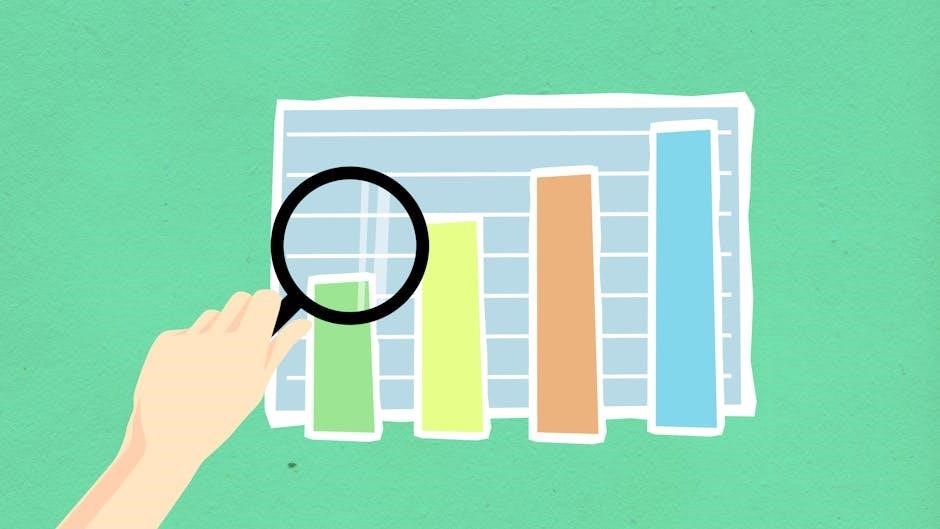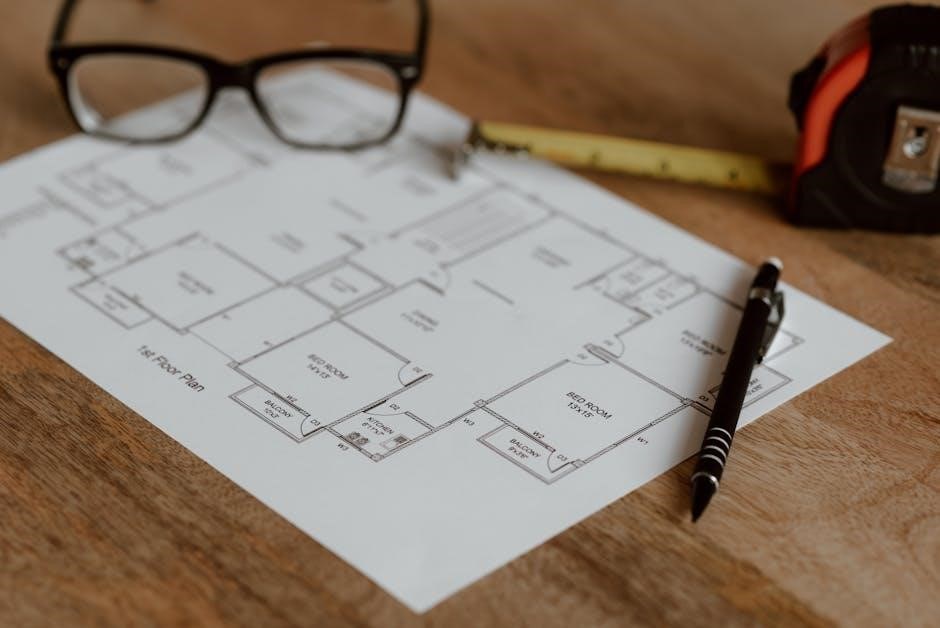The 3 pin flasher relay wiring diagram manual is an essential resource for anyone working with automotive electrical systems. It provides a comprehensive overview of the wiring configurations and functionalities of these relays. This manual serves as a valuable tool for troubleshooting and understanding the role of each pin.
Understanding the Function of a 3 Pin Flasher Relay
The 3 pin flasher relay is a crucial component in automotive electrical systems‚ responsible for controlling the intermittent flashing of turn signals and hazard lights. Unlike the 2-pin flasher‚ the 3-pin variant often incorporates an additional connection‚ typically for a pilot lamp or hazard flasher switch‚ enhancing its functionality.
At its core‚ the flasher relay acts as an automatic switch‚ repeatedly opening and closing an electrical circuit. This on-off cycling creates the flashing effect observed in turn signals. Understanding its function involves recognizing how it regulates current flow to the indicator bulbs‚ causing them to illuminate and extinguish in a rhythmic pattern.
This relay utilizes electronic components or a bimetallic strip to achieve this rhythmic interruption. In older designs‚ a bimetallic strip heated by a wire would bend‚ breaking the circuit‚ then cool and reconnect‚ creating the flashing action. Modern versions employ solid-state electronics for improved reliability and efficiency.
Ultimately‚ the 3 pin flasher relay ensures drivers can effectively signal their intentions on the road‚ promoting safety and preventing accidents through clear and consistent communication with other motorists. Its proper function is vital for maintaining vehicle safety standards.
Identifying Terminals: B‚ L‚ and X (or E)
When working with a 3 pin flasher relay‚ correctly identifying each terminal is essential for proper wiring and functionality. Typically‚ these terminals are labeled as “B‚” “L‚” and either “X” or “E.” Each letter corresponds to a specific function within the circuit‚ and understanding their roles is crucial for successful installation and troubleshooting.
The “B” terminal stands for “Battery” or “Power Input.” This is where the relay receives its power source‚ usually directly from the vehicle’s battery or through an ignition-switched circuit. It’s the positive (+) connection that energizes the relay’s internal components.
The “L” terminal denotes “Load” or “Lights Output.” This terminal connects to the turn signal lights themselves. When the relay cycles on‚ it sends power through this terminal to illuminate the lights.
The “X” or “E” terminal serves a different purpose depending on the specific application. Often‚ “X” signifies a connection to the hazard flasher switch‚ allowing the relay to operate the hazard lights independently from the turn signals. Alternatively‚ “E” might stand for “Earth” or “Pilot Lamp‚” providing a ground connection for a pilot lamp on the dashboard that indicates when the turn signals are active.
Consulting the wiring diagram is always recommended to confirm the exact function of the “X” or “E” terminal.
Pin ‘B’ ౼ Power Input Connection
The ‘B’ pin on a 3-pin flasher relay serves as the primary power input connection. This terminal is crucial for providing the necessary electrical energy to operate the relay and control the flashing of turn signals and hazard lights. Typically‚ the ‘B’ pin is connected directly to the vehicle’s battery or an ignition-switched power source.
The power source connected to the ‘B’ pin must be a reliable and consistent 12V supply to ensure proper relay function. Variations in voltage can cause erratic flashing or complete failure of the relay. Therefore‚ it’s essential to verify the voltage at the ‘B’ pin using a multimeter before proceeding with further wiring.
When connecting the power wire to the ‘B’ pin‚ ensure a secure and corrosion-free connection. A loose or corroded connection can cause intermittent power supply‚ leading to malfunctioning turn signals or hazard lights. Using proper crimping tools and connectors is highly recommended for a durable and reliable connection.
In some applications‚ a fuse may be incorporated into the power wire connected to the ‘B’ pin to protect the relay and the vehicle’s electrical system from overloads or short circuits. The fuse rating should be appropriate for the relay’s current draw and the wiring gauge used. Consulting the vehicle’s wiring diagram or the relay manufacturer’s specifications is crucial for selecting the correct fuse size.
Pin ‘L’ ⎻ Output to Turn Signal Lights
The ‘L’ pin on a 3-pin flasher relay is designated as the output terminal that connects to the turn signal lights. This terminal is responsible for delivering the intermittent electrical current that causes the turn signal bulbs to flash on and off. The ‘L’ pin is typically connected to the turn signal switch‚ which directs the current to either the left or right turn signal lights‚ depending on the driver’s selection.

When the turn signal switch is activated‚ the ‘L’ pin receives power from the flasher relay and sends it to the appropriate turn signal lights. The flasher relay’s internal circuitry controls the timing of the on-off cycles‚ creating the characteristic flashing pattern. The ‘L’ pin must be securely connected to the turn signal switch to ensure reliable operation.
In some vehicles‚ the ‘L’ pin may also be connected to a pilot lamp or indicator light on the dashboard. This lamp provides visual confirmation to the driver that the turn signals are functioning correctly. If the pilot lamp fails to illuminate when the turn signals are activated‚ it could indicate a problem with the ‘L’ pin connection or the turn signal circuit.
When troubleshooting turn signal issues‚ it’s important to check the continuity and voltage at the ‘L’ pin. A multimeter can be used to verify that the ‘L’ pin is receiving power from the flasher relay and that the signal is reaching the turn signal lights.
Pin ‘X’ (or ‘E’) ౼ Connection to Hazard Flasher Switch or Pilot Lamp

The ‘X’ (or ‘E’) pin on a 3-pin flasher relay serves a dual purpose‚ depending on the specific application. Primarily‚ it connects to the hazard flasher switch‚ enabling simultaneous flashing of all turn signal lights in emergency situations. When the hazard switch is activated‚ it provides power to the ‘X’ pin‚ triggering the flasher relay to operate all turn signals in unison.
Additionally‚ in some configurations‚ the ‘X’ (or ‘E’) pin may be connected to a pilot lamp or indicator light on the vehicle’s dashboard. This pilot lamp serves as a visual confirmation that the turn signals or hazard lights are functioning correctly. When the turn signals or hazard lights are activated‚ the ‘X’ pin sends a signal to illuminate the pilot lamp‚ providing feedback to the driver.
The ‘X’ (or ‘E’) pin connection is crucial for the proper operation of both the hazard lights and the pilot lamp. A faulty connection at this pin can result in the failure of either or both of these functions. Therefore‚ it is essential to ensure a secure and reliable connection when wiring the ‘X’ (or ‘E’) pin.
During troubleshooting‚ checking the voltage and continuity at the ‘X’ (or ‘E’) pin can help identify issues with the hazard flasher switch or the pilot lamp circuit. A multimeter can be used to verify the presence of power at the ‘X’ pin when the hazard switch is activated and to check the continuity of the connection to the pilot lamp.
Wiring a 3 Pin Flasher Relay: Step-by-Step Guide
Wiring a 3-pin flasher relay can be straightforward with a systematic approach. First‚ gather the necessary tools‚ including wire strippers‚ crimpers‚ a multimeter‚ and appropriate wiring connectors. Refer to the specific wiring diagram for your vehicle or application‚ as wire colors and terminal designations can vary.
Begin by identifying the three terminals on the flasher relay: ‘B’ (Battery/Power)‚ ‘L’ (Load/Lights)‚ and ‘X’ (or ‘E’‚ Hazard/Earth). Connect the power source wire to the ‘B’ terminal‚ ensuring it’s properly fused and connected to the positive terminal of the battery or an ignition-switched power source.
Next‚ connect the wire leading to the turn signal switch to the ‘L’ terminal. This wire carries the signal that activates the turn signal lights. Finally‚ connect the wire from the hazard flasher switch or pilot lamp to the ‘X’ (or ‘E’) terminal‚ depending on the application.
Secure all connections using appropriate crimping or soldering techniques. Ensure that the wires are firmly attached to the terminals and properly insulated to prevent short circuits. Use a multimeter to verify the voltage at the ‘B’ terminal and the continuity between the ‘L’ and ‘X’ terminals when the respective switches are activated.
Once all connections are made and verified‚ test the turn signals and hazard lights to ensure they are functioning correctly. If any issues arise‚ double-check the wiring connections and consult the wiring diagram for troubleshooting guidance.
Troubleshooting Wiring Issues with a 3 Pin Flasher Relay
When turn signals or hazard lights fail‚ the 3-pin flasher relay wiring is a prime suspect. Begin by visually inspecting all wiring connections for corrosion‚ loose terminals‚ or damaged insulation. Use a wiring diagram specific to your vehicle to trace the circuit and identify potential fault points.
A common issue is a blown fuse in the flasher relay circuit. Check the fuse box and replace any blown fuses with the correct amperage rating. If the fuse blows again immediately‚ there’s likely a short circuit in the wiring.

Use a multimeter to verify voltage at the ‘B’ terminal of the flasher relay with the ignition on. If there’s no voltage‚ check the wiring between the battery and the relay‚ including the fuse and any relevant switches.
If the ‘B’ terminal has voltage‚ check the continuity between the ‘L’ terminal and the turn signal lights when the turn signal switch is activated. A lack of continuity indicates a break in the wiring or a faulty switch. Similarly‚ check the continuity between the ‘X’ (or ‘E’) terminal and the hazard lights when the hazard switch is engaged.
If the wiring and switches appear to be functioning correctly‚ the flasher relay itself may be faulty. Replace the relay with a known good unit and retest the system. Remember to address any underlying wiring issues before replacing the relay to prevent future problems.
Using a Multimeter for Voltage Verification
A multimeter is an indispensable tool for diagnosing electrical issues in a 3-pin flasher relay circuit. It allows you to precisely measure voltage‚ ensuring each component receives the correct power supply. Begin by setting the multimeter to the DC voltage setting‚ typically around 20V.
To verify power at the flasher relay‚ connect the black lead of the multimeter to a known good ground‚ such as the vehicle’s chassis. With the ignition switch in the “on” position‚ probe the ‘B’ terminal of the flasher relay with the red lead. You should observe a reading close to the battery voltage‚ typically around 12V to 14V. A significantly lower voltage or no voltage indicates a problem in the power supply circuit‚ such as a blown fuse or a wiring fault.
Next‚ activate the turn signal switch and probe the ‘L’ terminal with the red lead. The multimeter should display a fluctuating voltage‚ indicating that the flasher relay is cycling on and off‚ sending power to the turn signal lights. If there’s no voltage fluctuation‚ the flasher relay may be faulty or not receiving the correct signal from the turn signal switch.
Finally‚ test the ‘X’ (or ‘E’) terminal in a similar manner‚ activating the hazard flasher switch. A fluctuating voltage on this terminal confirms that the hazard flasher circuit is functioning correctly. These measurements will help isolate the source of any electrical problems in the flasher relay circuit.
LED Compatibility and Hyper Flashing Fix
When upgrading to LED turn signal bulbs‚ many vehicles experience a phenomenon known as “hyper flashing‚” where the turn signals blink at a much faster rate than normal. This occurs because LEDs draw significantly less current than traditional incandescent bulbs‚ and the flasher relay interprets this lower current draw as a bulb outage.
Traditional thermal flasher relays rely on the heat generated by the current flowing through the bulbs to regulate the flashing rate. With LEDs‚ the reduced current doesn’t produce enough heat‚ causing the relay to flash rapidly.
To resolve hyper flashing‚ you have a few options. One common solution is to replace the thermal flasher relay with an electronic LED flasher relay. These relays are designed to work with the lower current draw of LEDs and maintain a normal flashing rate.
Another option is to install load resistors in parallel with the LED turn signal bulbs. These resistors mimic the current draw of incandescent bulbs‚ tricking the flasher relay into operating at the correct speed. However‚ load resistors generate heat‚ so they must be mounted in a safe location away from flammable materials.
When selecting an LED flasher relay‚ ensure it’s compatible with your vehicle’s electrical system and the number of LED bulbs you’re using. Some LED flasher relays are adjustable‚ allowing you to fine-tune the flashing rate to your preference.
Typical Applications in Automotive Systems

The 3 pin flasher relay is a vital component in various automotive systems‚ primarily responsible for controlling the flashing of turn signals and hazard lights. Its simple design and reliable operation make it a standard choice in many vehicles.
In turn signal systems‚ the flasher relay interrupts the flow of electricity to the turn signal bulbs‚ causing them to blink on and off at a regular interval. When the driver activates the turn signal switch‚ it signals the relay to begin this flashing cycle.
Similarly‚ in hazard light systems‚ the flasher relay controls the simultaneous flashing of all turn signal bulbs‚ alerting other drivers to a potential hazard. The hazard light switch activates the relay‚ initiating the synchronized flashing pattern.
Beyond turn signals and hazard lights‚ 3 pin flasher relays can also be found in other automotive applications‚ such as controlling warning lights or indicator lamps. Their versatility and ease of integration make them suitable for a range of signaling functions.
Understanding the typical applications of 3 pin flasher relays is crucial for diagnosing and repairing electrical issues in automotive systems. Knowing how these relays function within different circuits allows technicians to quickly identify potential problems and implement effective solutions.
